Drying Oils vs Non-drying Oils, What’s the Difference?
Natural plant oils and extracts have been favourite additions to our skin and hair care products for quite some time, partly due to their pleasing aromas, but also for their increasingly known beneficial properties and effects. In contrast, the chemical additives in our daily care products can cause adverse reactions on our skin and therefore also on our health.
The general growing awareness about the conservation of nature, also implies increased focus on our (skin) health. The steadily growing popularity of and demand for 100% natural skin and hair care products ensures an increased availability of nourishing skin oils, A wide variety of oils is now available, each with its own specific composition and properties.
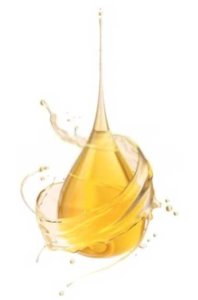 In order to choose the right product in the wide range of products offered, that will meet the required effect and result, one might feel a bit lost. A friend’s advice is surely well-intended, a positive online review might be promising, but following blindly may not be the best option. What’s suitable for one person’s skin may have a different effect on another’s skin.
In order to choose the right product in the wide range of products offered, that will meet the required effect and result, one might feel a bit lost. A friend’s advice is surely well-intended, a positive online review might be promising, but following blindly may not be the best option. What’s suitable for one person’s skin may have a different effect on another’s skin.
Which oil suits a particular ailment or condition best? – is usually the first question asked. Actually, this question should be preceded by: which oil is most suitable for my type of skin? This immediately limits the choice to a manageable number of products.
To shed some light, here’s an important clue to watch out for.
Without a shadow of a doubt: natural oils work wonders for the skin!
Plant-based oils are intended to be absorbed by and nourish the skin. This allows the natural ingredients to regenerate and/or heal the skin. Despite the fact that the majority of natural oils are labelled “suitable for all skin types” and “well-tolerated product”, there is a big distinguishing factor: some oils are absorbed directly and quickly into the skin, while others linger on the surface, leaving the skin feeling slightly heavy or greasy.
The amount of polyunsaturated (the well-known omega-3 and omega-6) fatty acids present, determines the classification of the oil as drying, semi-drying or non-drying. These fatty acids can be found in different concentrations in the distinctive oils – a larger amount ensures better absorption by the skin. Consequently, this affects whether a greasy film remains on the skin’s surface. If you are already familiar with using skin oils, you have probably noticed that some oils hardens to a solid film when exposed to air. A drop down the side of the bottle hardens over time, or the cap refuses to come off due to some dried oil in it. These are the so-called drying oils.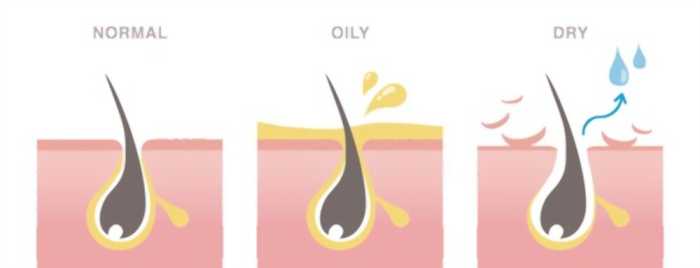 Drying oils contain more than 50% of polyunsaturated acids. Drying oils are quickly absorbed into the skin and do not leave a greasy film. Due to their light consistency they are also suitable to be used as a base for make-up.
Drying oils contain more than 50% of polyunsaturated acids. Drying oils are quickly absorbed into the skin and do not leave a greasy film. Due to their light consistency they are also suitable to be used as a base for make-up.
Jojoba, grapeseed, linseed and walnut oil fall into this oil category.
Semi-drying oils contain 20% to 50% of polyunsaturated acids. These oils are suitable for normal and combination skin but may clog the pores in oily skin.
Non-drying oils contain less than 20% of polyunsaturated fatty acids. Unlike drying and semi-drying oils, the non-drying oils take longer to absorb and linger on the skin as they remain moist / greasy when exposed to air. These oils tend to create a protective barrier against sun and environmental damage. Non-drying oils are recommended for dry and mature skin.
Typical non-drying oils are coconut, castor and sweet almond oil.
Drying oil versus Non-drying oil
Every skin is different and as a result can react differently to (a certain) oil. 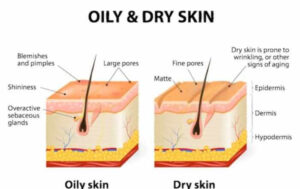 The skin is also affected by our hormone balance, such as during pregnancy and menopause, causing the skin to react differently, or it may benefit more from another oil than the one you usually apply.
The skin is also affected by our hormone balance, such as during pregnancy and menopause, causing the skin to react differently, or it may benefit more from another oil than the one you usually apply.
Drying oils are great for the skin, but that’s not to say non-drying oils aren’t! In fact, there are many benefits to using non-drying oils as they tend to moisturize and nourish more intensively, they are especially beneficial for very dry skin that needs more moisture. Non-drying oils will pamper you all night while you sleep, as they penetrate the skin very slow. Dry or mature skin benefit the most from a non-drying oil.
In general, the main requirement of these oils is that they moisturize and soften the skin. Natural oils are packed with nourishing fats that are great for the skin. The distinction between the available oils is how quickly they are absorbed by the skin. Some sink in quickly, some slowly and some very, very slowly. Some oils leave the skin feeling extra soft and not greasy at all, while others are so heavy and absorbed slowly that you will leave greasy fingerprints on anything you touch for the first 20 minutes after applying. Depending on the desired result, but also depending on your skin type, you choose a certain oil. For daily use, it is best to choose a lightweight oil that absorbs quickly so that it does not interfere with your daily activities. A slow-absorbing oil, on the other hand, can be a perfect lip balm, and its skin nourishing action is most effective when applied just before bed.
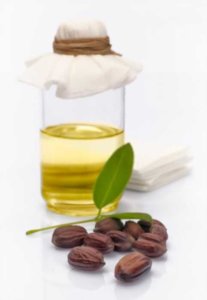 Drying oils – suitable for oily skin
Drying oils – suitable for oily skin
Jojoba oil is a liquid, oily wax. It has the same properties as the lipids naturally found in the top layer of the skin and mixes well with these lipids. This oil slows down the release of sebum and is therefore very suitable for oily skin. Jojoba oil protects the skin against moisture loss without leaving a greasy feeling on the skin, it is a particularly skin-friendly oil, it’s absorbed quickly and is generally well-tolerated by all skin types.
 Grapeseed oil is quickly absorbed and has a sebum-regulating effect. Acne-prone skin has been found to be deficient in linoleic acid, causing the sebum in the skin to become thick and sticky, leading to clogged pores. Due to its high content of linoleic acid, an omega-6 fatty acid, grape seed oil is excellent for the treatment of oily or acne-prone skin, strengthens the skin barrier and helps reduce water loss from the skin. It is also anti-inflammatory and antimicrobial, making it an ideal agent for fighting blemishes. As a bonus, the vitamin E in grape seed oil helps reduce the appearance of scars caused by acne.
Grapeseed oil is quickly absorbed and has a sebum-regulating effect. Acne-prone skin has been found to be deficient in linoleic acid, causing the sebum in the skin to become thick and sticky, leading to clogged pores. Due to its high content of linoleic acid, an omega-6 fatty acid, grape seed oil is excellent for the treatment of oily or acne-prone skin, strengthens the skin barrier and helps reduce water loss from the skin. It is also anti-inflammatory and antimicrobial, making it an ideal agent for fighting blemishes. As a bonus, the vitamin E in grape seed oil helps reduce the appearance of scars caused by acne.
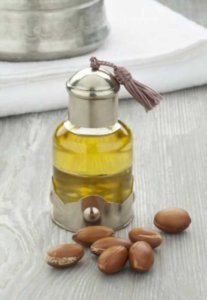 Argan oil reduces the amount of sebum in oily skin. The essential fatty acids present in argan oil help to reduce inflammation caused by acne (but also rashes, infections and bug bites), while soothing damaged skin. Tea tree oil may complement these benefits perfectly with its rich antioxidant content and inherent antibacterial, antiviral and antifungal properties. Together, these oils can help fight acne, meanwhile reducing inflammation and scarring.
Argan oil reduces the amount of sebum in oily skin. The essential fatty acids present in argan oil help to reduce inflammation caused by acne (but also rashes, infections and bug bites), while soothing damaged skin. Tea tree oil may complement these benefits perfectly with its rich antioxidant content and inherent antibacterial, antiviral and antifungal properties. Together, these oils can help fight acne, meanwhile reducing inflammation and scarring.
Non-drying oils suitable for dry and mature skin
Almond oil is a non-drying oil, which has been used for centuries to treat skin conditions, including eczema and psoriasis. In addition to various minerals, this oil is rich in vitamins A and B. Almond oil is both a moisturizer and an emollient. Moisturizers supply water to the skin and hold it in with an oily substance. Emollients smooth the skin, filling in little gaps. Rather than adding moisture, they help the skin retain it by improving its barrier function. Almond oil mostly remains at the surface of the skin, it is suitable for dry and mature skin.
Coconut oil is suitable for dry skin and for the treatment of calluses and chaps.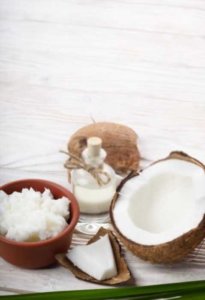
This oil contains fatty acids which help to reduce dryness and allow the skin to retain moisture. Coconut oil provides a protective barrier, shielding the skin from environmental toxins, dirt and other icky stuff. Its soothing properties make it a good choice for:
– sensitive skin, helping to alleviate temporary redness and irritation.
– dry skin can profit from its intense hydrating capabilities.
– mature skin, to minimize fine lines and wrinkles and create a more youthful appearance over time.
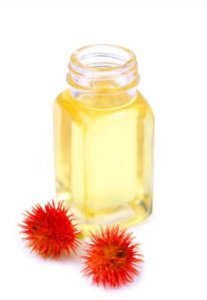 Castor oil contains triglycerides, which helps to retain moisture in the skin, making it a beneficial product for the treatment of dry skin. Castor oil is thicker and gloopier than argan or coconut oil. But it’s also far richer in vitamin E and fatty acids than most plant oils. This oil could be the answer to fighting signs of ageing, it helps to stimulate the production of collagen and elastin, it softens and hydrates the skin.
Castor oil contains triglycerides, which helps to retain moisture in the skin, making it a beneficial product for the treatment of dry skin. Castor oil is thicker and gloopier than argan or coconut oil. But it’s also far richer in vitamin E and fatty acids than most plant oils. This oil could be the answer to fighting signs of ageing, it helps to stimulate the production of collagen and elastin, it softens and hydrates the skin.
In addition, castor oil is traditionally known for its healing properties in skin conditions such as eczema, dermatitis, rosacea and psoriasis.
How should natural oil be stored?
The shelf life of the oils differ slightly per oil. For example, jojoba oil can be stored for a longer period of time, while rose hip oil has a shelf life of up to six months and must be kept cool. This is not the place to fully delve into this subject, all the more since this information is widely available on the internet. To avoid discarding either over-purchased or improperly stored oil, it’s definitely worthwhile checking this out.
So which oil do you choose? A combination of both – the desirable rapid absorption of a drying oil and the nourishing benefits of a non-drying oil – can do your skin good as well. One key tip? Apply the nourishing oil of your choice to the still damp skin after a bath or shower, this will help increase absorption into the skin and leave the skin feeling soft and silky.
